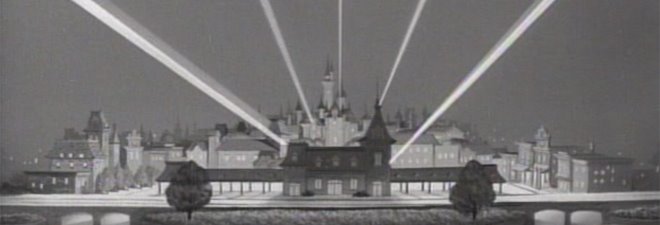 Chesley Bonestell's visions of space travel were big, sweeping visions. Who wouldn't want to live to see that Future?
Chesley Bonestell's visions of space travel were big, sweeping visions. Who wouldn't want to live to see that Future?
I worked for a science center for almost a decade. Even now, they remain a part of my life.
So needless to say, I have a stake in these places. It comes down to my belief that science museums can be vibrant, influential places. They can change perceptions and lives. How, you might ask?
Well, when I was young and working in science centers, there was that day's dogma--things like turning girls on to science, creating exhibit platforms that embraced the then-burgeoning Internet, and doing something with "the environment" (no one ever knew what that meant). Follow those prescriptions and that is the path to making a real difference.
Today, I'm older and the dogma is different-ish. Science centers now think they should do things like serve as a model for early-childhood learning, showcase hot-topic technologies like energy and medicine. Oh yeah, and keep doing something with "the environment."
There's nothing wrong with any of those ideas. They can become foundations for exhibitions or they can be infused into other exhibit concepts. But they are transient ideas, falling in and out of favor based on the technology, concerns, and consultant-speak of the day. There is nothing big, nothing lasting. Here's an example: the 1990's ideas of internet-based exhibits have been chased and, in so many ways, fizzled on delivery. In 2009, the Internet isn't an exhibit thing so much as a marketing thing. So, ask yourself: in ten years, how relevant will today's energy or medicine exhibits be?
Here's my premise: Science centers in their heyday and at their best sold two things better than anyone else: The Future and Fun.
Today's science centers miss that way too often. Instead they become corporate mouthpieces, chasing checkbooks by telling potential Big Money sponsors what they want to hear in the words they like hearing.
When I was a kid, it was a real treat to visit the original COSI. The place was a veritable funhouse. Experiences ranged from hands-on interactive things to funky dioramas to shows that you wouldn't find anywhere else.
Sure it was pure Leave It To Beaver...but it was also a projection of something cool. Where do you get these kinds of visions today?
And even in my youth, I knew the place was selling something more than amusement park-style escapism. There was a message there. I was a kid and all of this stuff was pointing to the future. An OPTIMISTIC future. One that would not only employ new technologies but one that would learn from the accomplishments and hardships and grit of people that had come before.
To my way of thinking, science centers today are devoid of that Future. One that is made fun based on BOTH the nature of the activities--the interactives, demonstrations, etc.--and an encompassing position of OPTIMISM.
The world we live in is cool. The people who have either explored or revealed or invented or (in some cases) dreamed up all the amazing things we know--they are themselves amazing. And tomorrow's world, the world of today's kids, is right there--ready for all kinds of new amazing things created by new amazing people.
That sentiment is at the heart of all the best science centers. Those are the places that inspire tomorrow's inventors and explorers, the engineers and researchers.


